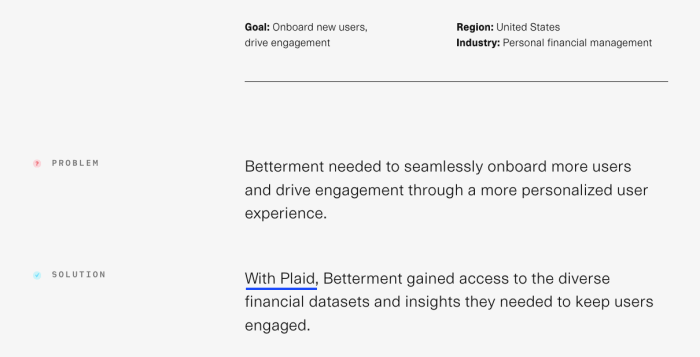Writing Case Studies for B2B introduces the power of storytelling in marketing, diving into the art of creating engaging narratives that resonate with the target audience and drive measurable results.
Learn how successful companies structure their case studies to showcase solutions and outcomes effectively, while also exploring the importance of design and distribution strategies for maximum impact.
Introduction to Writing Case Studies for B2B
Case studies play a crucial role in B2B marketing, offering tangible evidence of the success and value of a product or service. These real-life examples showcase how businesses have addressed challenges and achieved results, making them a powerful tool for building credibility and trust with potential customers.
Importance of Case Studies in B2B Marketing
- Provide Social Proof: Case studies serve as social proof, demonstrating to potential clients that your product or service has delivered results for others in similar situations.
- Showcase Expertise: By highlighting successful outcomes and strategies, case studies showcase the expertise and capabilities of your business, helping to position you as a trusted authority in your industry.
- Address Specific Pain Points: B2B case studies are tailored to address specific pain points or challenges faced by potential clients, making them highly relevant and compelling.
Typical Structure of a B2B Case Study
A typical B2B case study follows a structured format that includes:
- Introduction: Set the stage by introducing the client and providing background information on the challenges they faced.
- Challenges: Detail the specific challenges or pain points the client was experiencing.
- Solutions: Describe the solutions or strategies implemented by your business to address these challenges.
- Results: Highlight the outcomes and results achieved as a result of implementing your solutions, including quantifiable data where possible.
- Testimonials: Include quotes or testimonials from the client to provide additional validation and credibility.
Examples of Successful B2B Case Studies
Several well-known companies have leveraged B2B case studies effectively to showcase their success stories and attract new clients. Some examples include:
1. Salesforce
Their case studies highlight how their CRM software has helped businesses improve sales and customer relationships.
2. HubSpot
HubSpot’s case studies demonstrate how their marketing automation tools have driven significant ROI for clients.
Identifying the Target Audience
Identifying the target audience for a B2B case study is crucial for creating content that resonates with potential customers. The first step is to understand the industry in which your business operates and the specific niche you are targeting. This will help you narrow down your audience and tailor your case study to address their unique needs and pain points.
Significance of Understanding Audience’s Pain Points and Challenges
When you understand your target audience’s pain points and challenges, you can create a case study that speaks directly to their needs. By addressing these pain points in your content, you show potential customers that you understand their struggles and have solutions to offer. This can help build trust and credibility with your audience, making them more likely to consider your products or services.
- Research your target audience: Conduct market research to identify the specific challenges and pain points that your audience faces. This can involve surveys, interviews, or analyzing data to gain insights into what motivates your potential customers.
- Personalize the content: Tailor your case study to address the specific needs of your target audience. Use language and examples that resonate with them to make the content more engaging and relatable.
- Highlight solutions: Showcase how your products or services can help solve the challenges faced by your audience. Provide real-life examples and success stories to demonstrate the effectiveness of your offerings.
- Include testimonials: Use customer testimonials in your case study to provide social proof and show how your solutions have helped others in similar situations. This can help build credibility and trust with potential customers.
Gathering Information and Data: Writing Case Studies For B2B

When it comes to creating a compelling B2B case study, gathering accurate and relevant information is crucial. This stage sets the foundation for a successful case study that highlights the value your company provides to clients.
Collecting Relevant Data
To collect the necessary data for your B2B case study, start by reviewing internal records, project documentation, and customer feedback. Conduct interviews with key stakeholders involved in the project to gather insights and perspectives. Utilize surveys or questionnaires to gather quantitative data that can support your narrative.
Importance of Statistics, Metrics, and Testimonials
Including statistics, metrics, and testimonials in your B2B case study adds credibility and depth to your content. Statistics and metrics provide concrete evidence of the impact your product or service has had on the client’s business. Testimonials offer a personal touch and showcase real-life experiences that resonate with potential customers.
Conducting Client Interviews
When conducting interviews with clients or customers for case study insights, prepare a list of targeted questions that focus on the challenges faced, solutions implemented, and results achieved. Make sure to listen actively and ask follow-up questions to dig deeper into the client’s experience. Consider recording the interviews with permission to capture accurate quotes and anecdotes for your case study.
Crafting Compelling Storytelling
Crafting a compelling narrative in a B2B case study is crucial to engage readers and effectively communicate the challenges faced, solutions implemented, and outcomes achieved. By structuring the storytelling in a clear and engaging manner, you can make your case study more impactful and memorable.
Role of Storytelling in B2B Case Studies
In presenting challenges, solutions, and outcomes in a B2B case study, storytelling plays a vital role in humanizing the content and making it relatable to the audience. By weaving a narrative that follows a logical progression, you can effectively capture the reader’s attention and keep them engaged throughout the case study.
- Use a problem-solution framework: Start by introducing the challenge or problem faced by the client, then delve into the solutions offered by your company, and finally highlight the positive outcomes achieved.
- Incorporate real-life examples: Use anecdotes, quotes, or testimonials from actual clients to add credibility and authenticity to your case study.
- Create a sense of urgency: Highlight the consequences of not addressing the challenges faced by the client, emphasizing the need for immediate action.
- Showcase the human element: Share the personal experiences and emotions of the people involved in the case study to make the story more compelling and relatable.
Highlighting Solutions and Results
When it comes to showcasing solutions provided by a B2B company in a case study, it’s essential to highlight not just the products or services offered but also the specific problems they address. This helps potential customers see the direct relevance and effectiveness of the solutions in real-world scenarios.
Significance of Highlighting Measurable Results and Outcomes, Writing Case Studies for B2B
- Measurable results and outcomes provide concrete evidence of the success of the B2B company’s solutions. This helps build credibility and trust with potential clients.
- Highlighting measurable results also allows for a clear demonstration of the return on investment (ROI) that clients can expect from working with the company.
- By showcasing specific metrics and outcomes, the case study becomes more compelling and persuasive, leading to increased interest and conversions.
Strategies for Presenting Success Metrics Effectively
One effective strategy is to use charts, graphs, and visual representations to make the success metrics more digestible and impactful for the audience.
- Provide before-and-after comparisons to clearly illustrate the improvement or impact of the solutions provided by the B2B company.
- Include client testimonials or quotes that directly reference the achieved results, adding a human touch to the success metrics.
- Focus on key performance indicators (KPIs) that are most relevant to the target audience, ensuring that the success metrics resonate with their specific needs and goals.
Formatting and Design
When it comes to B2B case studies, having a clean and professional design is crucial. A well-designed case study not only showcases your company’s expertise but also helps in engaging and retaining the attention of your target audience.
Importance of Clean and Professional Design
A clean and professional design for a B2B case study can make a significant impact on how your audience perceives your brand. It helps in establishing credibility, professionalism, and trustworthiness. A cluttered or unprofessional design can turn off potential clients and make it difficult for them to focus on the content of the case study.
Best Practices for Formatting Text, Images, and Graphics
- Use clear and easy-to-read fonts to ensure readability.
- Break down the text into smaller paragraphs for better comprehension.
- Incorporate relevant images and graphics to support the content and make it visually appealing.
- Ensure consistency in formatting throughout the case study for a cohesive look.
Tips for Creating Visually Appealing Layouts
- Utilize white space effectively to avoid a cluttered look and enhance readability.
- Use colors strategically to highlight important information and create visual interest.
- Incorporate infographics or charts to present data in a more engaging and digestible format.
- Consider the use of bullet points or numbered lists to organize information and make it easier to scan.
Promoting and Distributing Case Studies

When it comes to promoting and distributing B2B case studies, it’s essential to use a multi-channel approach to reach your target audience effectively. Leveraging social media, email marketing, and websites can significantly boost the visibility and engagement of your case studies, ultimately leading to increased lead generation and sales opportunities.
Utilizing Social Media
- Share snippets of your case studies on various social media platforms to create intrigue and drive traffic back to your website.
- Engage with your audience by asking questions or encouraging discussions around the challenges and solutions presented in your case studies.
- Utilize paid social media advertising to target specific industries or companies that would benefit from your solutions.
Harnessing Email Marketing
- Include links to your case studies in your email newsletters to keep your audience informed and interested in your success stories.
- Segment your email list based on industry or interests to ensure that the right case studies reach the right audience.
- Consider creating a dedicated email campaign focused solely on promoting your case studies and their impact on previous clients.
Optimizing Your Website
- Create a dedicated case studies section on your website where visitors can easily access and explore your success stories.
- Optimize your case study pages for search engines by using relevant s and meta descriptions to improve visibility and organic traffic.
- Showcase client testimonials and success stories prominently on your homepage to grab the attention of potential leads and customers.





